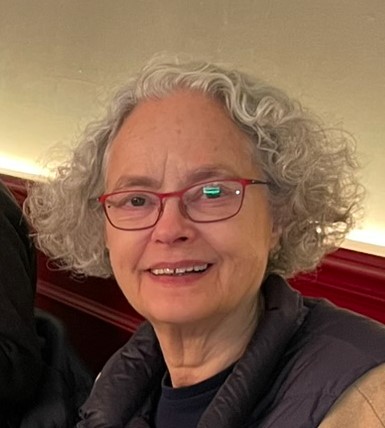Cultures in Contact: Seeing Interaction through Imagery on the Iranian Plateau during the Bronze Age of Exchange
Abstract
Among the minor arts in the ancient Near East, engraved seal stones are closely associated with personal or corporate identity expressed through iconography and style. In settings where administrators from different communities interact, such small portable objects can be particularly sensitive markers of cultural identity when other evidence, textual or ceramic, is absent. This feature of personal seals makes them an especially useful window into cultural interaction during the third millennium Early Bronze Age when the ancient world from the Euphrates to the Indus was linked together through a vast network of exchange and interaction along which merchants, craftsmen, emissaries and later soldiers and diplomats passed. While the Mesopotamian cuneiform texts provide us with hints of this interaction, we can evaluate it directly through the material traces left of the minor arts, especially the administrative residue of glyptic art. This talk will illustrate through the rich and varied finds from the recent excavations at Konar Sandal South in the Halil River valley of Kerman province in southeastern Iran the evidence for this cultural contact. Among them are impressions of imported seals, local seals, hybrid seals that merge traits of various cultural styles reflecting the cultural identities of the merchants and officials who interacted at the heart of mercantile interaction sphere. Through this residue we can imagine who the players were and how they were affected by their interlocutors.
About the Presenter
 Holly Pittman is a Near Eastern art historian and archaeologist, and an expert in Near Eastern glyptic art. She is the Bok Family Professor in the Humanities and a Professor in the History of Art Department of the University of Pennsylvania and serves as a curator in the Near East Section of the University of Pennsylvania Museum of Archaeology and Anthropology. Before joining the University of Pennsylvania, she was a curator of Ancient Near Eastern Art at the Metropolitan Museum of Art from 1974 to 1989. Since 1972, she has conducted archaeological excavations throughout the Middle East, including projects in Syria, Turkey, Cyprus, Iran, and Iraq. In 2019 she began directing new excavations at the site of Lagash in southern Iraq.
Holly Pittman is a Near Eastern art historian and archaeologist, and an expert in Near Eastern glyptic art. She is the Bok Family Professor in the Humanities and a Professor in the History of Art Department of the University of Pennsylvania and serves as a curator in the Near East Section of the University of Pennsylvania Museum of Archaeology and Anthropology. Before joining the University of Pennsylvania, she was a curator of Ancient Near Eastern Art at the Metropolitan Museum of Art from 1974 to 1989. Since 1972, she has conducted archaeological excavations throughout the Middle East, including projects in Syria, Turkey, Cyprus, Iran, and Iraq. In 2019 she began directing new excavations at the site of Lagash in southern Iraq.
Pittman began her undergraduate career at Bryn Mawr College, where she was first interested in chemistry and later studied ancient history. She completed her BA at Binghamton University and received her MA (1976) and PhD from Columbia University in 1990. She studied with Dr. Edith Porada in the Department of Art History and Archaeology at Columbia and wrote a dissertation, Glazed Steatite Glyptic Style: The Structure and Function of an Image System, which was awarded distinction. While studying at Columbia, Pittman also worked as a curator of Ancient Near Eastern Art at the Metropolitan Museum of Art.[3]
In 1989, Pittman joined the History of Art Department at the University of Pennsylvania as an associate professor. From 2000 to 2009 she was the College for Women Class of 1963 Endowed Term Professor in the Humanities and was the History of Art Departmental Chair. In 2010 she became the Bok Family Professor in the Humanities. Pittman also serves as a curator in the Near Section of the University of Pennsylvania Museum of Archaeology and Anthropology. She was the director of the Center for Ancient Studies from 1996 to 1999 and 2003 to 2007, for which she is now a member of the Executive Committee.[3]
Holly Pittman has conducted excavations in Cyprus, Turkey, Syria, Iran, and Iraq. Most notably she worked at the site of Konar Sandal near Jiroft in south-central Iran from 2004 to 2008, which revealed a previously unknown Early Bronze Age civilization with connections to the Indus Valley, Mesopotamia, and Central Asia.[4][5] In 2019, she reinitiated excavations at the site of Lagash in southern Iraq.[6]
Pittman is best known for her work on glyptic art and she has published extensively on 3rd millennium seals and sealings and Early Bronze Age administrative systems. She has edited and contributed to several volumes on the art and archaeology of the Near East as well as publications related to exhibitions. Since 2007, Pittman has directed the Al-Hiba Publication Project.[7]
About Archaeology Working Papers
The Working Papers in Archaeology seminar series provides a forum for dissemination of archaeological research and ideas amongst UQ archaeology students and staff. All students are invited to attend the series and postgraduate students, from honours upwards, are invited to present their research. The aim is to provide opportunities for students, staff and those from outside UQ, to present and discuss their work in an informal environment. It is hoped that anyone interested in current archaeological directions, both within and outside the School and University, will be able to attend and contribute to the series.
